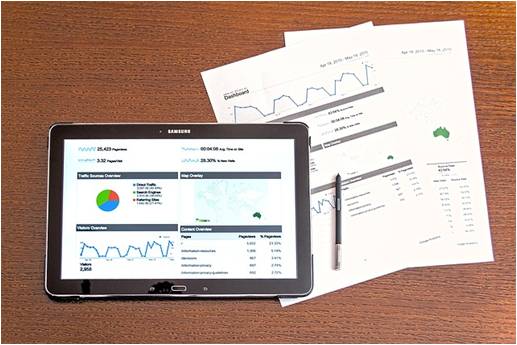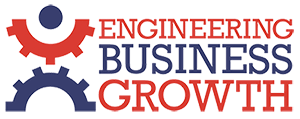How do we know if something is working? Because we can see the output / results.
 We know a car engine works because we can see that it propels the car forward. We know a blender in the kitchen works because we put food in it and it blends them together. We know fitness training is working because we are able to do the same activity for longer, or we’re able to do it faster or we recover to resting heart rate quicker.
We know a car engine works because we can see that it propels the car forward. We know a blender in the kitchen works because we put food in it and it blends them together. We know fitness training is working because we are able to do the same activity for longer, or we’re able to do it faster or we recover to resting heart rate quicker.
So how do we know if initiatives in our businesses are working? It’s also through seeing results. But the only way we can see results is if we look for them and then we measure them or record them.
Businesses are generally always looking to improve. They want to win more customers, win bigger contracts, deliver in a more efficient way, generate more profit, create a happier working environment and many other improvements.
 In order to move a business forward in any one of these areas, one of the fundamental activities needed is to measure the impact of different initiatives or changes being tried in order to drive the improvement.
In order to move a business forward in any one of these areas, one of the fundamental activities needed is to measure the impact of different initiatives or changes being tried in order to drive the improvement.
Have you ever heard a business owner use the phrase “it feels like things are getting better”? Gut feelings and instinct can be important in business, and a business owner may well have a good general sense of improvement – but unless they know to what extent and what it is that’s caused it, it’s hard to know what to do to replicate it and hard to know how much further improvement to plan and resource for on the basis of continuing or increasing the same activity.
As an example, suppose a business owner has looked to increase the leads coming in to the business. In order to do this they’ve started advertising on facebook, they’ve joined a local networking group and they’ve started leaflet dropping. Over the course of 6 months they’ve noticed that they’re enquiries and conversions have increased by 30%. In order to know this in the first place they would need to be measuring their enquiry rates prior to this (and if it is a seasonal business where sales are effected by the time of year they would need to have records for the same 6 months in the previous year to make a proper comparison).
Secondly in order to know whether the activity is actually worthwhile to them, they would need to be clear on how much the new activities are costing them (including cost of their own time) and compare this to how much additional profit it is generating to again assess whether they are actually worthwhile.
But in order to really measure results that will enable them to accelerate growth, they should also be looking at where their leads are coming from. Which of the new activities is actually generating the new business. It may be all of them to varying degrees, or it may just be one. If it is all of them one may still be much more effective than the others and if it is delivered at a similar price point then it would make sense to drop the activities having less impact and do more of the activities having a bigger impact. But without measuring the impact, this would be impossible to know.
 It is important to have a series of numbers you are always measuring in your business that tell you if your efforts are achieving what you’re looking to achieve. Reviewing these on a monthly basis gives you a snapshot of the health of your business, but also give you key information about whether what you’re spending your time on is worthwhile or not. If you can see numbers going up in the way you want, then you know the things you are doing are working and therefore it is worthwhile doing more of it. If the numbers aren’t going up then it also tells you that you might be wasting your time on some activities.
It is important to have a series of numbers you are always measuring in your business that tell you if your efforts are achieving what you’re looking to achieve. Reviewing these on a monthly basis gives you a snapshot of the health of your business, but also give you key information about whether what you’re spending your time on is worthwhile or not. If you can see numbers going up in the way you want, then you know the things you are doing are working and therefore it is worthwhile doing more of it. If the numbers aren’t going up then it also tells you that you might be wasting your time on some activities.
This enables you to make a quick decision and to either do more of what you’re doing in the positive case, or stop or change what you’re doing in the negative case. It also gives you the data of what you need to do more of if you want to accelerate growth. If you know £1000 on Google adds generated you an additional £30,000 of sales and an additional profit of £10,000, then its worth building up capacity and investing in more of it. Similarly if you know you invested £400 per month in a personal trainer coming to run a morning session for your staff twice a week, but you’ve seen profit generated per employee increase by £100 per month due to increased productivity, then you know it’s another worthwhile investment.
By measuring we know what works and what we need to do more of in order to accelerate improvement. So what do you need to measure? And what measurements are you looking to achieve in these areas?
We call these measures “Business Growth indicators”, and they are a key part of one of the tools we use with our clients – ‘BGI Strategy On A Page’.
To find out more about how we use ‘BGI Strategy on a Page’ and ‘Business Growth Indicators’ to help your business improve and grow, we invite you to come along to our next NEXT LEVEL BUSINESS MASTERCLASS.
If you missed out on Business Growth Acceleration Tool #1: Accountability, CLICK HERE.

